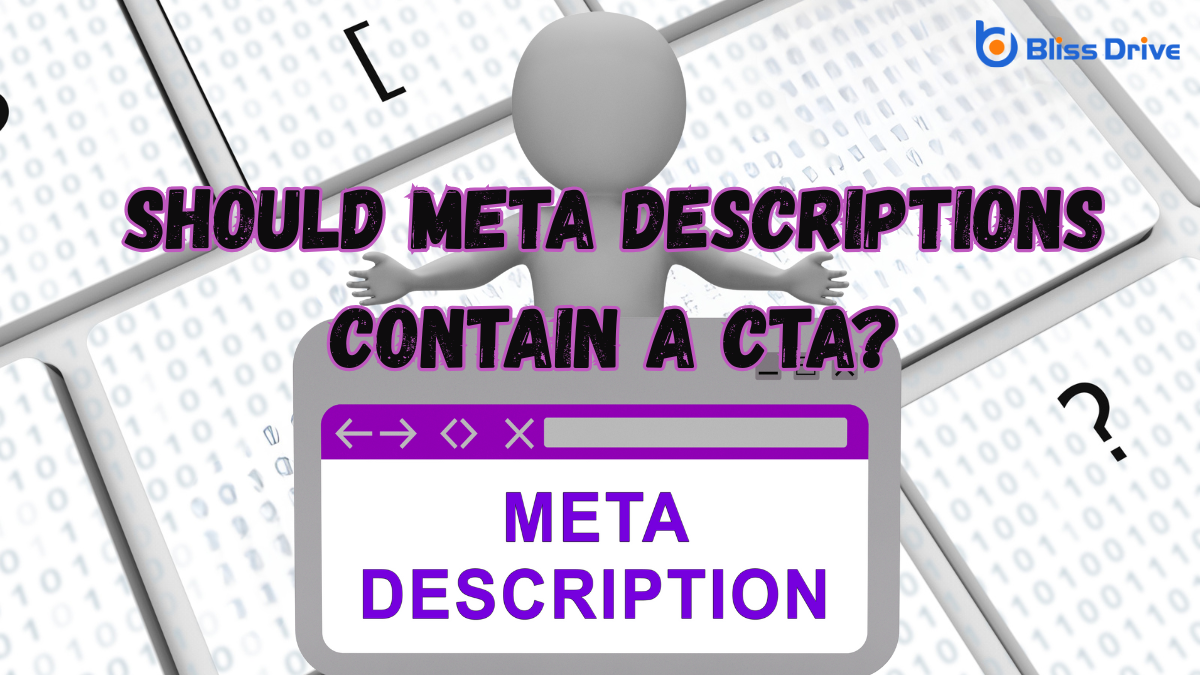Digital Marketing Services
Learn More About Us

You've probably heard that meta descriptions are essential for SEO, but have you ever considered if they should include a call-to-action (CTA)? Adding a CTA might boost click-through rates by encouraging immediate user engagementThe level of interaction and involvement users have with social media content.. However, there's a fine line between persuasive and pushy. So, what's the right approach? How do you craft a CTA that resonates without overwhelming? Let's explore how CTAs in meta descriptions can impact your online strategy.
While traversing the digital landscape, understanding meta descriptions becomes essential for enhancing your website's visibility. You’ll find these snippets beneath your page titles in search engine results, summarizing your content.
A well-crafted meta descriptionA brief summary of a web page’s content, shown in the SERP. should convey your page's value, prompting users to click through to your site. Aim for approximately 150-160 characters, ensuring it’s informative yet concise.
Focus on including relevant keywordsWords or phrases that users type into search engines to find information. naturally, reflecting your content without misleading. Search engines don’t always factor meta descriptions into rankingsThe position at which a website appears in the SERP., but they greatly impact click-through rates.
Your audience should immediately grasp what your page offers. Testing different versions helps identify what resonates most, optimizing engagement.

Elevate your marketing strategy by mastering the art of crafting effective Calls to Action (CTAs). A well-crafted CTA guides your audience, encouraging them to take the next step, whether it's purchasing a product, signing up for a newsletterA regularly distributed email containing news, updates, and content relevant to subscribers., or exploring more content.
You want to create urgency and offerThe specific product or service being promoted by affiliates. value, motivating users to act now rather than later. CTAs are vital because they transform passive visitors into active participants. By clearly communicating what you want your audience to do, you remove doubt and hesitation.
Keep your CTAs action-oriented and concise, using strong, persuasive language. When your CTAs align with your overall marketing goals, they become powerful tools, driving engagement and conversions.
Incorporating a CTA within your meta descriptions can markedly enhance your online presence and drive user engagement. By guiding readers toward specific actions, you’re more likely to convert casual visitors into loyal customers.
A well-crafted CTA not only grabs attention but also communicates a clear value propositionA statement that clearly explains the benefits of a product or service and why it is better than the..., encouraging users to click through to your site. This boosts your click-through rate (CTR)The percentage of users who click on a specific link or CTA., signaling to search engines that your content is relevant and valuable, potentially improving your search rankings.
Additionally, a strong CTA aligns your business goals with user intent, ensuring that the traffic you attract is more likely to convert. By telling users exactly what to expect, you reduce bounce rates and improve the overall user experience, making your website a go-to resource.
Despite their potential benefits, CTAs in meta descriptions can sometimes backfire if not executed thoughtfully. Overloading your meta description with aggressive CTAs might feel pushy, turning users away before they even click.
A generic or poorly crafted CTA can create mistrust, leading potential visitors to question the reliability of your content. If users feel misled by a CTA that doesn't align with the page's actual content, you risk high bounce rates and a negative user experience.
Additionally, search engines might penalize you for using misleading or overly promotional language, impacting your ranking. It's essential to strike a balance between being persuasive and maintaining authenticity.
Carefully consider your audience's needs and expectations to guarantee your CTAs enhance rather than hinder your meta descriptions.

How do you truly understand what drives your audience to engage with your content? Start by analyzing user behavior.
Look at metrics like click-through rates (CTR), bounce rates, and time spent on page. These data points reveal how effectively your meta description, including any calls-to-action (CTAs), draws users in.
Pay attention to patterns. Are users clicking but leaving quickly? This might indicate that the content didn't meet their expectations set by the description.
Use A/B testing to experiment with different CTAs and see which ones resonate best.
Don’t forget to review feedback and comments for qualitative insights.
While crafting engaging meta descriptions and CTAs is essential for user engagement, their role in influencing SEO and search rankings is equally significant.
You might think meta descriptions directly impact rankings, but they don't. Instead, they affect your click-through rate (CTR), which signals search engines about your page's relevance. A higher CTR often leads to better positioning in search results over time.
Including a CTA in your meta description can encourage users to click, boosting your CTR. By strategically aligning your meta descriptions with user intent, you indirectly support improved SEO performance.
Confirm your descriptions are concise, relevant, and compelling. Remember, search engines aim to provide users with the most relevant and engaging content, so your meta descriptions should reflect that goal.
Crafting effective CTAs is essential for guiding users toward the actions you want them to take. Start by being clear and specific about what you want the user to do. Use action-oriented language that creates urgency and encourages immediate action. Words like "discover," "join," or "learn" can motivate users.
Keep your CTA concise, ensuring it’s easily understood at a glance. Tailor the CTA to your audience's needs and desires, so it resonates with them personally. Consider the placement of your CTA; it should be prominent and easy to find.
Finally, test different variations to see what works best for your audience. A/B testing can reveal which CTAs generate the most engagement, allowing you to refine your approach over time.

Examining real-world examples and case studiesIn-depth analyses of specific instances or examples to highlight success stories or lessons learned.... can provide valuable insights into the effectiveness of well-crafted CTAs.
Consider the case of a travel agency that integrated a strong call-to-action like "Book your dream vacation now!" into their meta descriptions. They noticed a significant increase in click-through rates, showing that a compelling CTA can motivate users to act.
Similarly, an e-commerce site used "Shop the latest deals!" and saw a boost in conversions.
By analyzing these examples, you can understand how specific wording and urgency in CTAs can drive user engagement.
Don't underestimate the power of concise, action-oriented phrases in your meta descriptions. They can turn casual browsers into active participants, ultimately enhancing your site's performance and achieving your goals.
Incorporating a CTA in your meta descriptions can greatly boost user engagement and click-through rates. By using concise, action-oriented language that resonates with your audience, you can encourage immediate action and align with user intent. Remember, though, to avoid being overly aggressive or misleading, as this can deter users and increase bounce rates. Striking the right balance is key to enhancing your online presence and improving your SEO performance. Use CTAs wisely, and watch your engagement grow.
